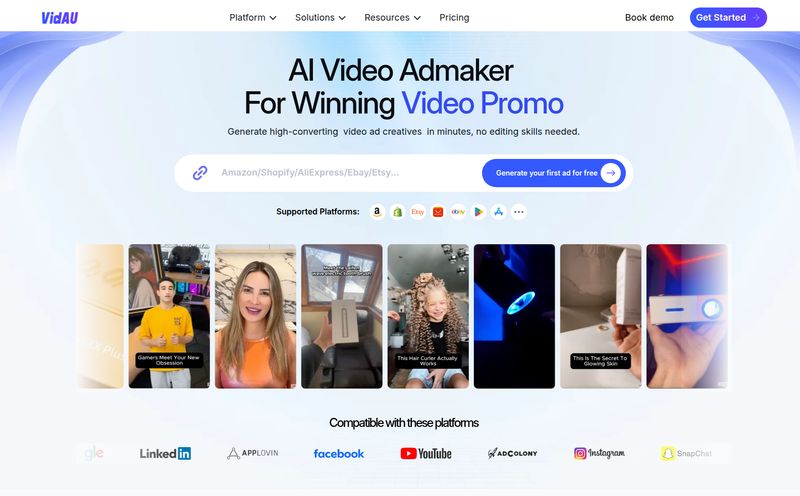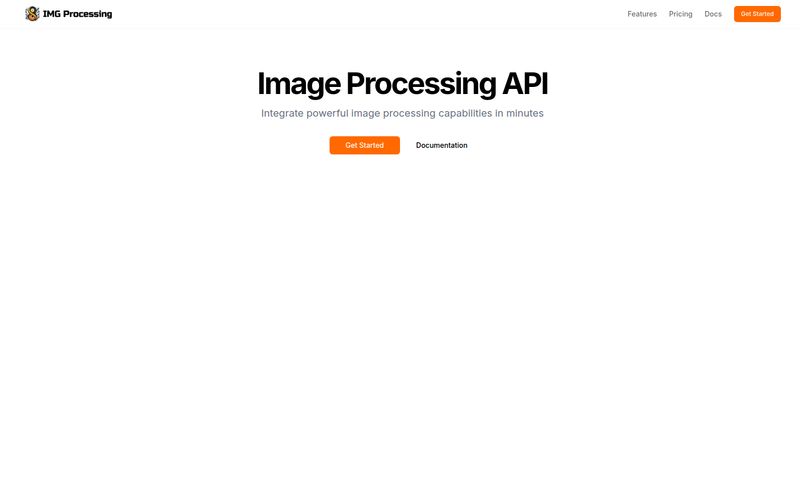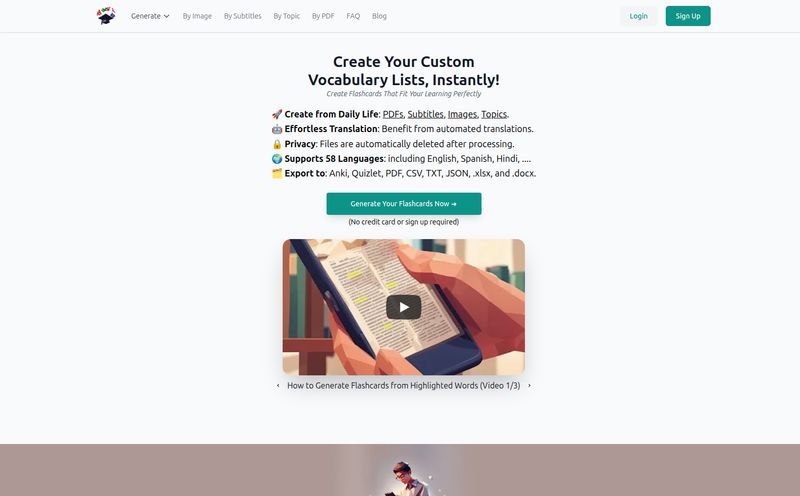I’ve been in the SEO and digital content game for a long, long time. Long enough to remember when 'audio content' meant a horribly compressed MP3 file of a guy with a cheap microphone. And text-to-speech? Forget about it. For years, TTS sounded like a robot that had just been woken up from a very long nap. Robotic, clunky, and completely devoid of any human emotion.
We’ve all been there, right? You click a button to have an article read to you, and you're met with a monotone voice that butchers names and has the emotional range of a brick. It was... functional, I guess. But never enjoyable.
But things are changing. Fast. The same AI advancements that are shaking up how we write and create images are now revolutionizing the world of audio. And at the forefront of that is the technology coming out of labs like OpenAI. So when a tool like TTSOpenAI.com lands on my radar, claiming to use that very tech to create natural, high-quality speech, my curiosity is definitely piqued. I had to see for myself if it could finally deliver on the promise of a voice that you'd actually want to listen to.
So, What Exactly is TTSOpenAI?
At its core, TTSOpenAI is a platform that does one thing, but it aims to do it exceptionally well: it turns text into audio. But this isn't your grandpa's text-to-speech engine. By building on OpenAI’s powerful voice models, it transforms written words—whether from a simple text box, a PDF, or an entire eBook—into incredibly lifelike audio files.
Think about the possibilities. That pile of industry reports you've been meaning to read? Now it’s a personal podcast for your morning commute. That dense eBook? You can listen to it while you're at the gym. For content creators like us, it means creating voiceovers for videos, audio versions of our blog posts, or even quick podcasts without needing a professional studio or voice actor. It's a productivity hack disguised as a simple web tool.
Getting Started: The First Impression
Logging into a new tool can sometimes feel like you're trying to launch a rocket. A million buttons, confusing menus, and a user manual the size of a phone book. Not here. The first thing that struck me about TTSOpenAI was its clean, almost minimalist interface.

Visit Text To Speech OpenAI
You’re greeted with a simple text box and a few options. Pick a voice (I saw one named 'Alloy' during my test), paste your text, and go. It’s wonderfully straightforward. There’s no steep learning curve to wrestle with. It just works.
When you process a longer piece of text, a small message pops up letting you know it's working and that you can even bookmark the page and come back. I appreciate that honesty. It’s not pretending to be instantaneous magic; it’s just really good tech, and sometimes, good tech needs a moment to think. It's a small detail, but it speaks to a user-friendly approach.
The Voices: Are They Actually Any Good?
This is the million-dollar question, isn't it? A pretty interface means nothing if the voice sounds like it's narrating a hostage video. I’m happy to report that the quality is… impressive. Genuinely impressive.
The voices have nuance. They have inflection. They pause in the right places and handle punctuation with a natural cadence that older systems could only dream of. It’s the difference between hearing a computer read words and hearing a person tell a story. While it might not fool you into thinking it's a real person 100% of the time, it's so close that you quickly forget you're listening to an AI. It supports multiple languages too, which is a massive win for anyone creating content for a global audience.
Let's Talk Money: The TTSOpenAI Pricing Model
Ah, pricing. The part of every review where we hold our breath. I’m so used to complicated tiers and restrictive monthly subscriptions. TTSOpenAI takes a different path: pay-as-you-go.
I’ve always been a fan of this model, especially for project-based work. You’re not locked into a monthly fee you might not fully use. You just pay for what you generate. They even have a handy calculator on their site to estimate costs before you commit.
The pricing is broken down by quality. Here’s a quick look:
| Quality Tier | Cost per 1,000 Characters |
|---|---|
| Standard | $0.015 |
| High-quality | $0.03 |
| Advanced model | $0.04 |
They also offer a credit-based system. For instance, you can buy 200,000 credits for $8. This approach simplifies things even further. Instead of calculating tiny fractions of a cent, you just burn through credits. For context, this very blog post is around 9,000 characters, so you can generate a lot of content with a small investment.
Key Features That Caught My Eye
Beyond the great voices and fair pricing, a few other features stood out to me as particularly useful for my fellow content pros.
First, the API Integration. This is huge. While the simple web interface is perfect for one-off tasks, the API means businesses and developers can integrate this voice generation directly into their own applications. Think automated news readers, accessibility tools for websites, or dynamic voice responses in an app.
Second, the ability to convert PDFs and eBooks directly is a game-changer for productivity. I know so many people who have a 'to-read' folder on their desktop that's just gathering digital dust. This feature turns that folder into an audio library.
Finally, the explicit allowance for commercial use. This is a big one. As a creator, you always have to check the fine print. Knowing you can use the audio you generate for your monetized YouTube channel, your podcast, or your online course without legal headaches is a massive relief.
The Good, The Bad, and The Nitty-Gritty
No tool is perfect. After spending some time with it, here's my breakdown of what I loved and what you should be aware of.
What I Really Liked
The voice quality is, without a doubt, the star of the show. It's powered by some of teh best tech in the industry, and it shows. The user interface is another major win; its simplicity means anyone can start creating audio in minutes. I’m also a big fan of the no-subscription-trap pricing. The pay-as-you-go model feels honest and is perfect for creators whose needs vary from month to month.
A Few Things to Keep in Mind
The pay-as-you-go model, as great as it is, can be a double-edged sword. If you're generating massive amounts of audio, the costs can become unpredictable if you’re not tracking your usage. You have to be mindful of your character count. Also, to get that truly premium, almost-human sound, you’ll want to use the higher-quality models, which naturally cost a bit more. It's a classic case of 'you get what you pay for', which is fair, but something to budget for.
Frequently Asked Questions about TTSOpenAI
Do I need to be a coder to use TTSOpenAI?
Absolutely not. While they offer an API for developers, the main website is designed for everyone. If you can copy and paste text, you can use this tool. It's incredibly user-friendly.
Can I use the audio for my YouTube channel or podcast?
Yes, you can. The platform allows for commercial use, making it a great option for content creators who want to monetize their work. This includes videos, podcasts, audiobooks, and more.
What kind of files can I convert?
You can simply paste text directly into the tool, or you can upload files like PDFs and various eBook formats to convert them into audio. This flexibility is one of its strong points.
Is the pricing really just pay-as-you-go?
Yes, it is. There are no recurring monthly or annual fees. You can either pay per character as you go or buy pre-paid credit bundles, like the $8 for 200,000 credits option, to use whenever you need them.
Can I customize the voice?
Yes, to an extent. You can choose from different available voices and often adjust settings like speed and pitch to better match the tone you're aiming for in your final audio output.
Final Thoughts: Is TTSOpenAI a Keeper?
So, what’s the final verdict? In a field that's been crowded with clunky and robotic voices for years, TTSOpenAI feels like a breath of fresh air. It’s a powerful, accessible, and surprisingly affordable tool that leverages top-tier AI to deliver on its promises.
Whether you're a podcaster, a YouTuber, an educator, a developer, or just someone who wants to get through their reading list without actually reading, this tool has something to offer. It effectively lowers the barrier to entry for creating high-quality audio content.
It's not perfect, and heavy users will need to watch their spending, but the quality and ease of use are undeniable. It's a fantastic tool that genuinely feels like a step forward. It’s definitely earned a spot in my digital toolbox, and I’d say it’s worth a bookmark for anyone serious about their audio game.



